ABOUT
The Moon is the only natural satellite and it is the fifth-largest satellite. The moon shows us the same face because it takes27.3 days both to rotate on its axis and to orbit earth. By sunlight reflects we see full moon. half moon or no moon[new moon]. The shape of the moon depends upon the position in relation to the earth and sun. moon has a thin atmosphere.so a layer of dust or a footprint can site for centuries.
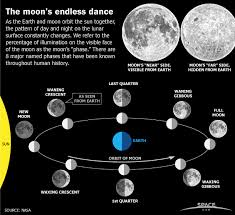
CHARACTERISTICES
Distance to earth – 384.400km
Gravity – 1.62m/s
| Designations | |
|---|---|
| Adjectives | Lunarselenic |
| ORBITAL CHARACTERISTICES Epoch J2000 | |
| Perigee | 362600 km (356400–370400 km) |
| Apogee | 405400 km (404000–406700 km) |
| Semi-major axis | 384399 km (0.00257 AU)[1] |
| Eccentricity | 0.0549[1] |
| Orbital period | 27.321661 d (27 d 7 h 43 min 11.5 s[1]) |
| Synodic period | 29.530589 d (29 d 12 h 44 min 2.9 s) |
| Average orbital speed | 1.022 km/s |
| Inclination | 5.145° to the ecliptic[2][a] |
| Longitude of ascending node | Regressing by one revolution in 18.61 years |
| Argument of perigee | Progressing by one revolution in 8.85 years |
| Satellite of | Earth[b][3] |
| PHYSICAL CHARACTERISTICS | |
| Mean radius | 1737.4 km (0.2727 of Earth’s)[1][4][5] |
| Equatorial radius | 1738.1 km (0.2725 of Earth’s)[4] |
| Polar radius | 1736.0 km (0.2731 of Earth’s)[4] |
| Flattening | 0.0012[4] |
| Circumference | 10921 km (equatorial) |
| Surface area | 3.793×107 km2 (0.074 of Earth’s) |
| Volume | 2.1958×1010 km3 (0.020 of Earth’s)[4] |
| Mass | 7.342×1022 kg (0.012300 of Earth’s)[1][4] [6] |
| Mean density | 3.344 g/cm3[1][4] 0.606 × Earth |
| Surface gravity | 1.62 m/s2 (0.1654 g)[4] |
| Moment of inertia factor | 0.3929±0.0009[7] |
| Escape velocity | 2.38 km/s |
| Sidereal rotation period | 27.321661 d (synchronous) |
| Equatorial rotation velocity | 4.627 m/s |
| Axial tilt | 1.5424° to ecliptic6.687° to orbit plane[2]24° to Earth’s equator [8] |
| North pole right ascension | 17h 47m 26s266.86°[9] |
| North pole declination | 65.64°[9] |
| Albedo | 0.136[10] |
| Surface temp. min mean max Equator 100k 220K 230K[11] 85°N | |
| Apparent magnitude | −2.5 to −12.9[c]−12.74 (mean full moon)[4] |
| Angular diameter | 29.3 to 34.1 arcminutes[4][d] |
| ATMOSPHERE: | |
| Surface pressure | 10−7 Pa (1 picobar) (day)10−10 Pa (1 femtobar) (night)[e] |
| Composition by volume | HeArNeNaKHRn |
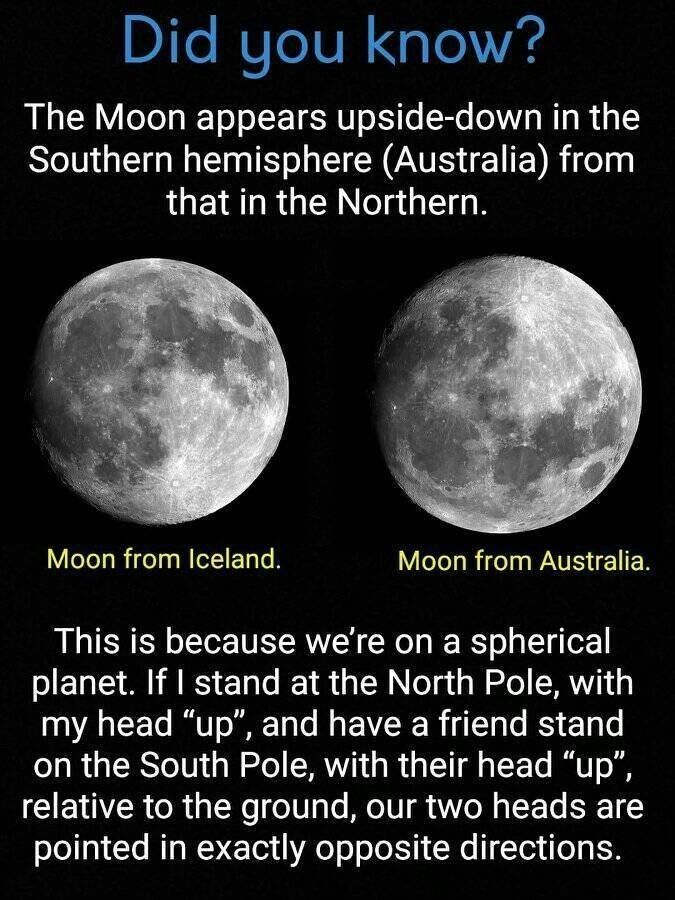
INTERNAL STRUCTURE
The moon has a very small core.1 to 2 percent of the moon’s mass 420 miles[680 km] wide. Moon consist of iron.sulpher and other elements. Moon’s rocky mantle is about 825 miles thick which is made up of rocks that contain iron and magnesium.
LUNAR ECLIPSES
As we all know that Lunar eclipse occurs when the Earth gets between the Sun and the Moon during the earth’s revolution and rotation.during lunar eclipse full moon occurs
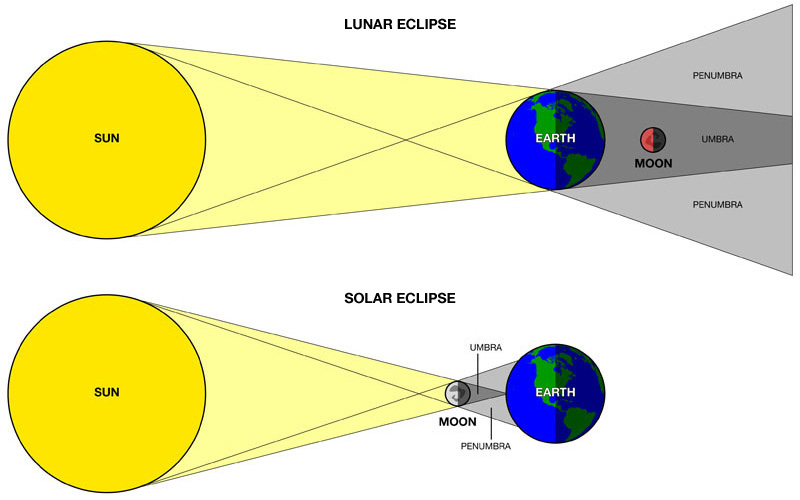
SOLAR ECLIPSES
When Moon enters in between the Sun and the Earth is known as Solar Eclipse. There is no moon during Solar Eclipse
SURFACE COMPOSITION
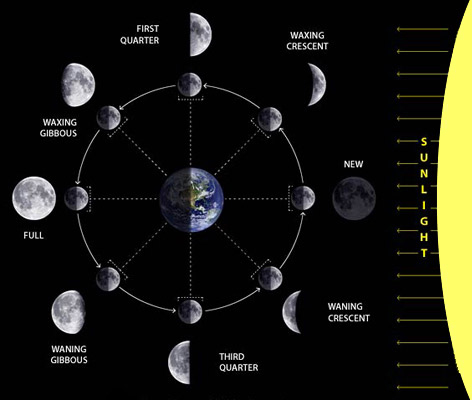
The weight of the lunar surface is 43 percent oxygen 20 percent silicon and 19 percent magnesium and 10 percent iron and 3 percent calcium and3 percent aluminum and 0.42 percent chromium and 0.18 percent titanium and 00.12 percent manganese. Orbiters have found the traces of water on the lunar surface.water is abundant on slop facing the lunar south pole. After research on water scientists caution that the water is an “Extremely dry desert”
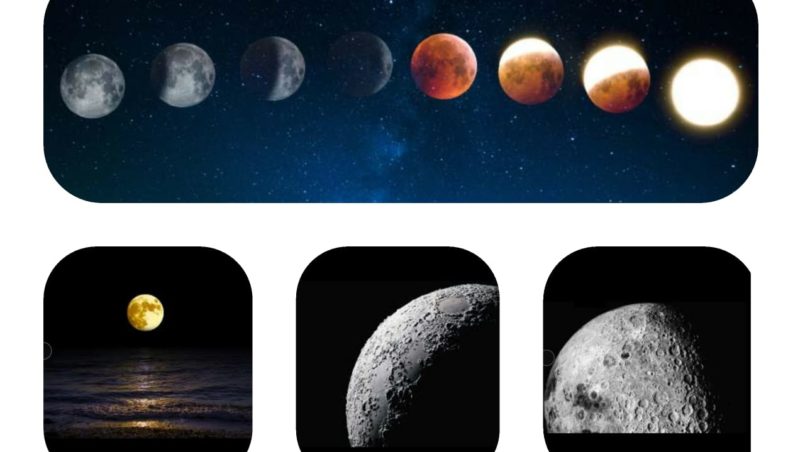

Hi Amazing! Its really awesome paragraph, I have got much clear idea regarding from this post. gracias
Hello I read this article fully concerning the difference of most up-to-date and preceding technologies, it’s amazing article. vielen dank
THANK YOU
These are genuinely enormous ideas in about blogging. You have touched some pleasant factors here.
Any way keep up wrinting. Free Credit report
Hi Hello, i believe that i noticed you visited my website so i came to go back the prefer?.I’m attempting to in finding issues to enhance my site!I assume its ok to use some of your ideas!! thanks
Help me with my essay https://essayhelpof.com
Essay writing help buy essays cheap
Doctoral dissertation writing dissertation assistance dissertation writing fellowship
Writing the dissertation dissertation writing service dissertation proposal
Writing dissertation business dissertation topics best dissertation writing services
Hallo This is a really good tip particularly to those new to the blogosphere. Short but very precise information… Thanks for sharing this one. A must read post! many thanks
Good web site you’ve got here.. It’s difficult to find good quality writing like yours nowadays.
I honestly appreciate individuals like you! Take care!!
cash advance https://cashadvanceopd.com
Online custom essays https://customessayin.com/ essay writer website
Quality custom essay professional college essay writers urgent custom essays
Best essay writer company quality custom essay essay writer funny
Best online essay writer customessayin.com custom college essays
Master dissertation dissertationxyz.com examples of dissertations
Professional dissertation help dissertationxyz.com dissertations writing services
Dissertation defense advice dissertationxyz.com dissertation express
Can someone write my essay essay writing website write my social work essay
Buying college papers online write my college paper write my papers
Buying papers https://papersonlinebox.com/ who can write
my paper for me
Someone to write my paper write my business paper order paper online
Cialis professional cialis buy india viagra cialis combo
Cialis canada viagra or cialis reviews get generic cialis overnight
Cialis generic online uk cialis uk online cialis
buy paypal
Review of cialis order cialis no prescription cialis dapoxetine
How much is cialis without insurance newcialed.com
is generic cialis safe
Generis cialis brand cialis sale cialis
cheapest price
Walmart pharmacy cialis price http://www.newcialed.com buy cialis from canadian pharmacy
Viagra cialis on line parmacy http://newcialed.com/ cialis on lone
Cialis message board cialis 10 mg price buy generic cialis with paypal
Levitra cialis http://www.newcialed.com cialis for daily use side effects
Cialis black reviews newcialed.com drugstore1st cialis
Cheap cialis by post levitra vs cialis what is super cialis
Cialis replacement cialis payment with paypal generic cialis cost
Generic cialis from india safe cheap cialis by post inexpensive real
cialis
Cialis no prescription paypal newcialed.com online buy cialis
Purchase cialis online canada cheap cialis uk cialis 200 mg what is it
Cialis on ebay germany cialis professional cialis com
By cialis tablets in frankfurt pharmacy http://newcialed.com/ cialis 20mg 30
Generic levitra and cialis in australia
purchase generic cialis cialis tablets
Cialis online shopping http://newcialed.com/ buy cialis in mexico
Mexican online pharmacies northwest pharmaceuticals canada shoppers drug mart pharmacy
Buy drugs online http://pharmcanadayou.com/ canada pharmaceuticals online
Canada viagra prescription drugs prices online pharmacies uk
The canadian pharmacy prescription drugs without doctor approval buy prescription drugs
from canada
Walgreens pharmacy interpharmnew.com prescription drugs from canada online
Discount prescription drugs online http://www.interpharmnew.com
canadian drugstore
Canadian pharmacy no prescription needed http://www.interpharmnew.com
pharmacy canada
Order prescriptions online without doctor
cheap drugs online pharmacies shipping to usa
Online pharmacy canada interpharmnew.com canadian pharmacy cialis 20mg
Discount drugs online pharmacy indian pharmacy mexican pharmacies shipping to usa
Cialis 800mg black http://www.selectioncial.com cialis 36 hour dosage
Cialis online cheap viagar vs cialis cialis from india
Free cialis online http://selectioncial.com/ cialis 80mg
10 mg generic cialis cialis overnighted buy cialis online
with check
Cialisis online http://www.selectioncial.com
cialis by mail
Cialis without prescriptions uk selectioncial.com buy dapoxetine with cialis
Cialis overnight shipping canada selectioncial.com where to buy
generic cialis
Brand cialis for sale http://www.selectioncial.com purchase cialis with paypal
Cialis online selectioncial.com where to buy generic cialis
Cialis online with no prescription cialis canada pharmacy no prescription required generic cialis forums
Liquid tadalafil citrate dosage buying tadalafil online tadalafil
alternative
Tadalafil online canadian pharmacy tadalafilik.com tadalafil pill
Tuf 20 tadalafil what are the side effects of tadalafil tadalafil headache
Make tadalafil tadalafilik.com tadalafil cheap
Tadalafil uk can you buy tadalafil over the counter non prescription tadalafil
Tadalafil 40 mg for sale http://www.tadalafilik.com
tadalafil costco
MOON-LIGHT TO THE NIGHT SKY
tkwhvqwqt http://www.gu552m14122tzd4oc01rpw567se91duys.org/
[url=http://www.gu552m14122tzd4oc01rpw567se91duys.org/]utkwhvqwqt[/url]
atkwhvqwqt
Remeron canadian pharmaceuticals online safe Trimox
Rulide canadian pharmacy 365 Danazol
Augmentin http://onlinecanda21.com/ discount pharmacies
Prescription prices comparison http://www.onlinecanda21.com Cardizem
Zyvox onlinecanda21.com global pharmacy canada
Diabetes canadian discount pharmacy pharmacy cost comparison
Apcalis SX pharmacies in canada online pharmacies
Qual a dose recomendada de levitra levitra 20mg obat untuk ejakulasi dini how is levitra different than viagra
エルメスバッグブラントコピー代引き
louis vuitton alma rot
Crush- Mix-Weight-Filling -Sealing Line (Film Packing)
Levitra generico no brasil does levitra have a generic levitra 10 mg precio
venezuela
woran erkennt man original louis vuitton
楽天市場スーパーコピーブランド
Aluminium Strip 50mm
Cooling Face Roller
ブランド帽子コピー
louis vuitton neverfull gm monogram
Digital Signage Solutions Companies
クロムハーツ指輪スーパーコピー販売店
cheap discount louis vuitton bags online on sale
gucci crocodile sneakers
disposable mask
シャネルベルトスーパーコピー激安
Rx online prescription pricing Kamagra Polo
louis vuitton keychain holder
Car Battery Terminal
ジャガールクルト時計ブラントコピー代引き
Agse2
本物と同じカルティエピアスコピー
authentic louis vuitton handbags on sale
Door Frame Forming Machine
ディオール靴スーパーコピー激安
louis vuitton luggage new
エムシーエムバッグコピー激安
sell louis vuitton online
Inline Skates Boot Sports Skates
SBR Granule
louis vuitton people sale
ルイヴィトン帽子コピー
Fast Cell Phone Car Charger
louis vuitton cheap replicas
クロムハーツ指輪コピー代引き
Garlic Sowing Machine
クロムハーツサングラスブラントコピー代引き
cheap louis vuitton 2012 spring usa
louis vuitton neverfull versus totally
Adss Clamp Tension Bracket Supplier
ブランドコピーs級
Lightning Arrestors
エルメスピアスコピー品
cheap replica louis vuitton alma handbags
I just could not go away your website before suggesting that I actually loved the usual information an individual provide on your guests?
Is gonna be again frequently to investigate cross-check new
posts speed dating https://datingsitesww.com
I could not refrain from commenting. Exceptionally well written! Free Credit Report official site https://creditscoresetf.com
Softened Water System
Cornerstone Plus Herbicide
Hot Melt Adhesive Film
Ship Turnplate Indoor Playground Electric Equipment
Stepper With Risers
SMC Doorskin
Fuse Block
Education DIY Toys
New Energy Car Mold
6 Inch Brush Chipper
Wall Socket
SMC Wind Scooper Mould
8.8 Screws
Advent Calendar Printing
Glass Skincare Packaging
LED T60 T70 T80 T100 T120 T140 T160 Light Bulb
Kids Party Favors
Heat sink extrusion